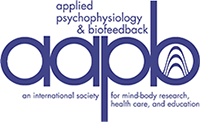Stimulation Technologies: "New" Trends in "Old" Techniques
Optimal functioning of the brain and mind is essential for good mental health and well-being. Unfortunately, disruptions in specific brain region function may arise for a variety of reasons, which include adverse genetic predispositions, poor nutrition, illness and cerebral accidents, developmental hormonal shifts, and negative life events resulting in overload and stress reactions. Fortunately, there are low-cost, easy-to-use, and effective electronic brain-stimulating technologies available today. These stimulation technologies include audiovisual entrainment (AVE) devices (e.g., light and sound machines), as well as electrostimulation technologies such as cranio-electro stimulation and transcranial direct current stimulation. The instruments are all designed to aid individuals with modulating their own cortical arousal levels, whether to regain lost functionality or to enhance outcomes such as improved social interactions, athletic performance, mathematical problem-solving, or creating new art and music. This article reviews a range of current techniques used for stimulating and modulating brain regions for positive gain.

Photic stimulation induction of hypnotic trance (Kroger & Schneider, 1959).

Forearm EMG levels during AVE (Hawes, 2000).

Peripheral temperature levels during AVE (Hawes, 2000).

CBF at various photic entrainment repetition rates (P. Fox & Raichle, 1985).

Neurotransmitter levels following AVE (Shealy et al., 1989).

Brain map in 1-Hz bins, during 8 Hz AVE (Sterman-Kaiser Imaging Labs–eyes closed).

EEG showing photic entrainment (Kinney et al., 1973).

Peak electric field distribution with CES from 3 to 100 Hz (Datta et al., 2013).

Neurotransmitter pathways originating from the brain stem (Silverthorn, 2003).

Blood serum versus CSF measures of neurotransmitters following CES (Shealy et al., 1988). B.Endor = beta-endorphin; C.Ester = cholinesterase.

Medication treatments versus CES for treating depression (Gilula & Kirsch, 2005).

Improving attention and the “Mendonca method” for reducing pain (Mendonca et al., 2011).

Treating depression, addictions, and cravings while improving planning ability.

Improving insightfulness by improving global perception (Chi & Snider, 2011).

Treating Wernicke's aphasia following stroke (Monti et al., 2013).

Dave Siever
Contributor Notes
